How to Make a Tetrahedral Kite

Alexander Graham Bell became famous for inventing the telephone. But he had a bigger dream: manned flight.
A year before the Wright brothers made their historic flight in Kitty Hawk, N.C., Bell wrote in 1902 that it was possible to build large, lightweight flying machines. Instead of building one large wing, he proposed a bunch of small wings in the form of tetrahedrons (teh-tra-HEE-drons), strong, pyramid-shaped structures.
Was Mr. Bell right? Build this 10-cell tetrahedral kite and soar!
WHAT YOU’LL NEED
- Scissors
- Ballpoint pen
- 60 long, straight drinking straws
- Kite string
- Needle (big eye)
- File folder or poster board
- Plastic bags
- Cellophane tape
- Dowel, 1/8 inch diameter
WHAT YOU’LL DO
Step 1: Cut a piece of string eight times as long as the length of a straw. Thread the needle with the string.
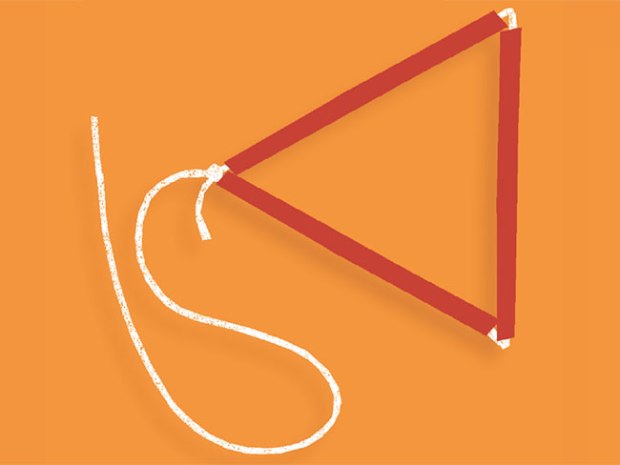
Step 2: String three straws together. Tie into a triangle using a square knot. Leave a 2-inch end.
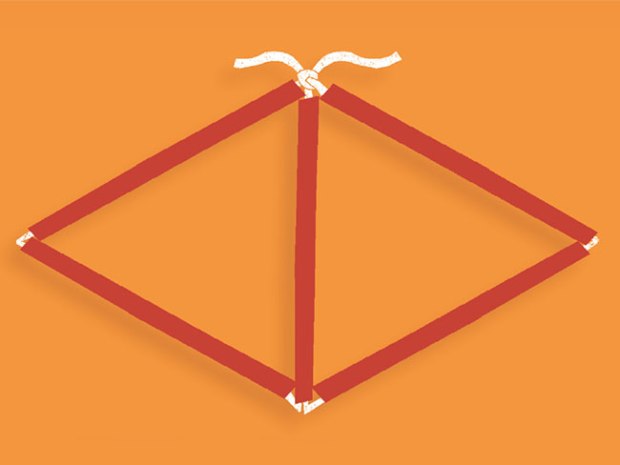
Step 3: String two more straws on the long string. Tie to one of the triangle’s corners using a double half hitch. Cut the string leaving a 2-inch end. Keep remaining string for later.
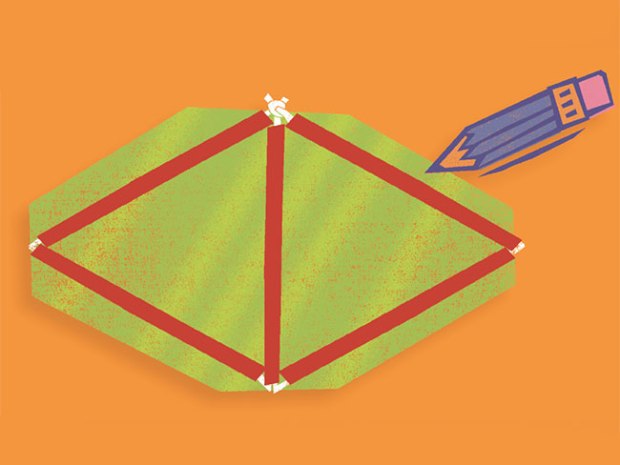
Step 4: Make a pattern by tracing both triangles onto the file folder or poster board. Draw a 1-inch flap along the side of each straw. Cut out. Save for step 6. Tie remaining string to left or right corner in figure above.
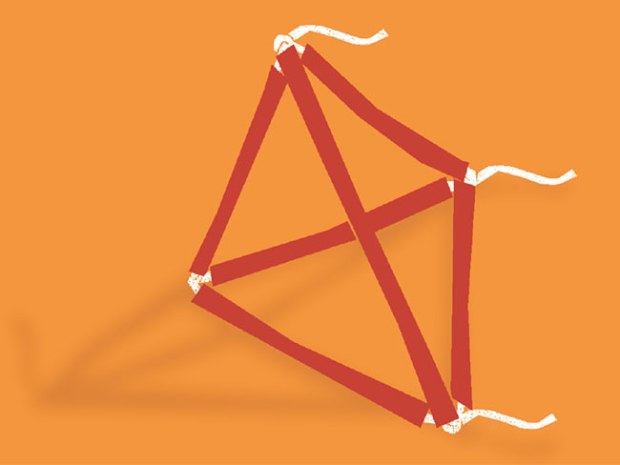
Step 5: Thread a sixth straw with leftover string. Tie the string to the opposite corner, creating a three-dimensional figure. You now have the frame of one cell.
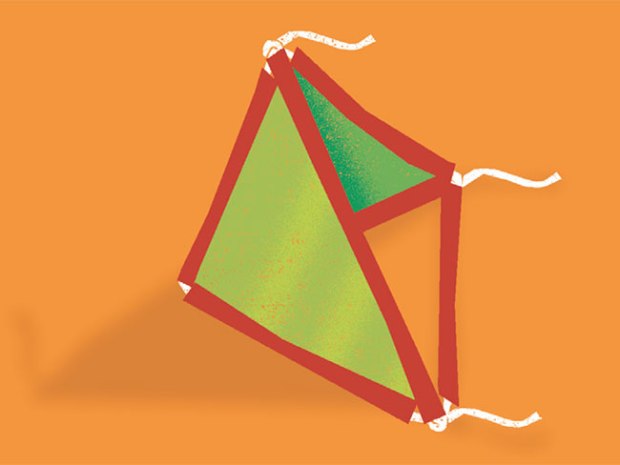
Step 6: Trace the pattern onto the plastic bag, and cut along the lines.
Step 7: Lay the frame on the plastic, and tape in place.

Step 8: Make nine more cells.
Step 9: Tie cells together with the ends of the strings. Be sure the leading edges face the same way!
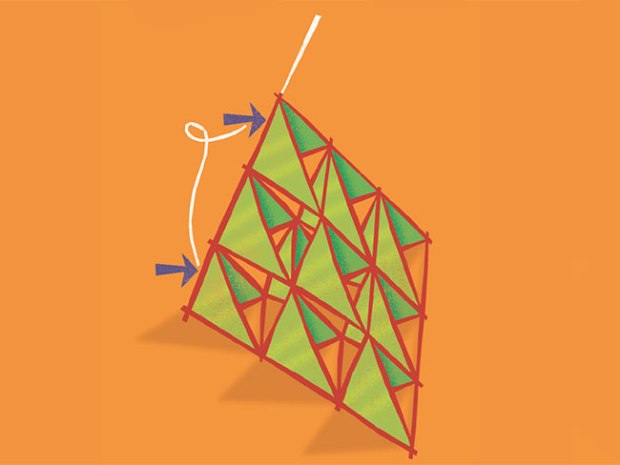
Step 10: Slide the dowel through the straws in the leading edge and cut excess. Put tape over each end of the dowel to keep it from sliding out.
HOW TO GET YOUR KITE READY TO FLY
1. Tape the dowel in place at the areas marked by arrows above.
2. Cut string 1 1/2 times as long as the leading edge.
3. Thread string on a needle. Sew ends of string through plastic around the dowel.
4. Tie an overhand knot one-third down from the top.
5. Tie your flying string to the knot, and launch your kite.
I built it B4…really interesting kite…great geometric idea … it fly really well in light wind .
i hate this
I built a ten cell tetrahedral kite 35 years ago using wooden dowels and mylar. After I completed it, my friend, an aeronautical engineer said he wanted to help fly it. So we dragged it behind my convertible, but alas it was a no go. It took a few days before we realized that instead of scooping the air, we should have been using it as an air foil. Boy, was his face red!
ok
The wind needs to blow into the kite not against it, so make sure to tie the string to a corner with the paper covers both sides of the straw.
uggggg how long should the string be!!!!! i am ten!!! i flew my kite a day or two ago!! it worked untill it broke!! i just need to know how long the two stings to be!!!
i want 1
Build it first
looks cool dont think it will work with the triangles need 2 add 2 directions
sounds cool more like sounds awesome
horabal
Like your spelling?
I built one and had no success in successful flight. Thought maybe the problem was bridle so I built another one tweaking the bridle location a little. Second attempt resulting in only flying into the trash can at the park due to frustration. So I don;t know if these instructions are the best to go by for building a tetrahedral kite.
it really works!